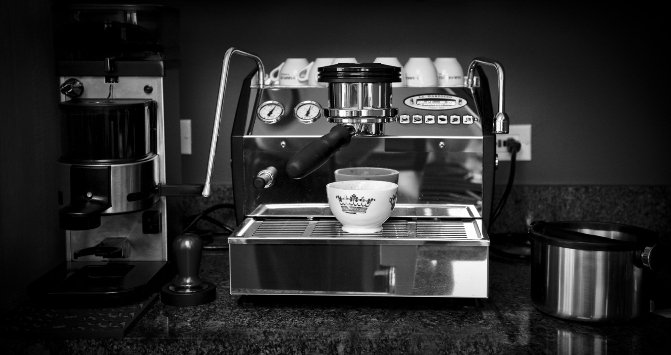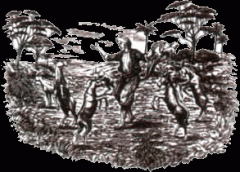Coffee History the Origin of Commercial semi-automatic Coffee machines
Incubation period: before 1900
Coffee extraction "perfect steam theory"
In 1818, Dr. Romershausen patented an "extractor" in Prussia.
·In 1822, French Louis Bernard Rabout obtained a patent that used the characteristics of ink absorbing paper combined with Dr. Romershausen's design to obtain a cleaner extract.
·In 1824, Parisian craftsman Caseneuve designed a coffee machine that was too complex to manufacture, hoping to avoid the loss of aroma.
Laurens 'patent in France in 1827 emphasized the need to moisten coffee powder with steam before coffee extraction.
In 1833, Samuel Parker invented a pump to pump water up through coffee instead of down through it. (He noted, in particular, that the good taste of coffee comes first and the bitter taste is extracted later.)
·In 1838, Paris optician Leburn designed a variety of small table coffee machines, which were very popular in southern Europe.
·In 1840, Tiesset designed a vacuum pump to pull hot water down with extra force through coffee powder.
In 1844, Cordier, a Frenchman, drew a number of coffee extractors in his patent application, one of which was similar to Eicke's German machine 30 years later.
In 1847 Romershausen made a steam pressure coffee pot.
In 1855, French Loysel introduced a large-capacity bar coffee machine (about 4.5 meters high), claiming to make 10,000 cups of coffee a day.
In 1868, the Viennese Reiss developed a new type of "Vienna pot".
·In 1885, Italian Angelo Moriondo signed a coffee patent that could make 50 cups at a time.
Childhood: 1901-1947
One cup of coffee at a time. Exclusive privileges.
In 1901, Luigu Bezzera patented a coffee machine designed by him.
In 1902, his friend Desiderio Pavoni added a pressure relief piston device to this machine and commercialized it for production and sale.
In 1903 Bezzern sold the patent to Pavoni for 10,000 lire due to financial difficulties.
In 1905, La Pavoni was founded.
In 1906, the Italian Arduino patented a heat exchanger built into the machine to heat water quickly.
In 1909, Luigi Giarlotto added a pump to the machine, thus solving the problem of insufficient pressure in extraction.
In 1910, his second patent was a screw-down piston that squeezed all the flavor out of coffee.
In 1935, Dr. Illy invented the first machine to use compressed air to push water through coffee grounds.
Since 1938, the boiler placement has been successfully improved from the original vertical placement to horizontal placement.
Adolescence: 1948 - 1961
Pressure increases, water temperature decreases; birth of "gold bubble"
In 1948, Gaggia introduced the piston-type lever spring coffee machine to the market.
In 1952, the large upright disappeared overnight.
In 1956, Cimbali used a hydraulic system to avoid using too much force when using levers.
Maturity: after 1962
Popularization of electronic components; advantages of "heat exchange and heat circulation"
In 1955, Giampietro Saccani took the important step of maintaining the temperature of the brewing head stable.
In 1961, Italy and Spain cooperated to produce the E61 model. In the past, hot water was pressurized, but now it is pressurized and then heated, a perfect revolution from the past.

Important Notice :
前街咖啡 FrontStreet Coffee has moved to new addredd:
FrontStreet Coffee Address: 315,Donghua East Road,GuangZhou
Tel:020 38364473
- Prev

A brief history of the origin and development of coffee culture
No one knows about the place where coffee was born, and there are different opinions about the origin of coffee. In order to get an accurate answer, coffee experts and botanists investigated coffee and found that Ethiopia in Africa is the hometown of coffee. According to the current investigation, there are still a large number of unknown wild coffee trees in the African rainforest region, whose fruit flavor is unique and received by experts.
- Next

Legend of the Shepherd in the History of Coffee
It is said that in the 10th century AD, on the land of the Ethiopian plateau in Africa, there was a shepherd named Karl. One day, he saw his flock of goats suddenly looking excited and abnormal. He thought it was very strange, so he observed them carefully and finally found that the reason why the goats were excited was because they ate the red fruit on the tree. Carl, full of curiosity, couldn't help it.
Related
- How did the Salvadoran coffee industry develop in Central America?
- What exactly does the golden cup extraction of coffee mean?
- The Origin of Coffee flower
- [2023 Starbucks World Earth Day] there are more meaningful things besides free Starbucks coffee!
- What kind of coffee is there in Spain? 9 Flavors of Spanish Coffee
- Aromatic African coffee| Kenya's coffee culture and historical production area
- Liberica Coffee Bean knowledge: the characteristics of Liberian Coffee beans of the three original species of Coffee beans
- The origin and formula of Spanish latte introduces the taste characteristics of Bombon coffee in Valencia, Spain.
- How to adjust the solution of over-extracted coffee
- What is the tasting period of coffee beans? What is the period of coffee and beans? How should coffee wake up and raise beans?

